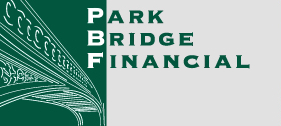 Last week, the Baker Program in real estate had the honor of hosting David Rodgers at the Distinguished Speaker Series. David is the founder of Park Bridge Financial and his company provides the entire gamut of services related to debt, though the primary focus is investments and surveillance of CMBS trusts. During his recorded interview (see below), he provided us with the sentiments of industry leaders towards the Dodd Frank legislation. David mentioned that “The Dodd Frank was welcomed by the largest CMBS lenders, bulge bracket banks because they are the ones that had the sophistication, the money and resources to comply with all the regulations, particularly risk retention. Wells Fargo as an example has the capital to invest in their own bonds. Many of the other conduit lenders couldn’t.” The big banks had seen this as an opportunity to increase their market share at the expense of smaller competitors. The potential repeal of Dodd Frank may have the following implications:
Last week, the Baker Program in real estate had the honor of hosting David Rodgers at the Distinguished Speaker Series. David is the founder of Park Bridge Financial and his company provides the entire gamut of services related to debt, though the primary focus is investments and surveillance of CMBS trusts. During his recorded interview (see below), he provided us with the sentiments of industry leaders towards the Dodd Frank legislation. David mentioned that “The Dodd Frank was welcomed by the largest CMBS lenders, bulge bracket banks because they are the ones that had the sophistication, the money and resources to comply with all the regulations, particularly risk retention. Wells Fargo as an example has the capital to invest in their own bonds. Many of the other conduit lenders couldn’t.” The big banks had seen this as an opportunity to increase their market share at the expense of smaller competitors. The potential repeal of Dodd Frank may have the following implications:
- Re-introducing some of the smaller conduit competitors back into the lending market
- More available capital for borrowers requiring more aggressive loans
- Maintenance of current lending spreads for borrowers.
In reference to bulge bracket banks, David discussed his thoughts of why some have decided to shift their focus from CMBS to portfolio lending. David’s poignant answers fortified the understanding to the challenges faced by the CMBS market as a whole and reactive behavior of the participants. He explained that “the big difficulty with CMBS is hedging. When the market dislocated in 2008, all the hedging strategies we had used on Wall Street, failed. And there is no good inexpensive hedge against a long position in CMBS because nobody wants to take the opposite side of the trade. What that’s done is caused a lot of different attitudes in the market. Some banks have said, that we don’t like the volatility of the profit margins that we have had in the CMBS lending, now that we can’t hedge well. So we are inclined towards portfolio lending. Those instruments don’t need to be marked to market on a daily basis. While other players in the industry are comfortable with the volatility and are satisfied with the returns.”
With the multitude of issues being faced by the CMBS industry, David shared that CMBS lending is currently considered the last resort. He elaborated that there are technical difficulties in hedging, and there are technical difficulties in the fact that so much of CMBS has been paid down that it is no longer as large a component as it used to be in the Barclays fixed income index and many of the buyers try to track that index. So it’s a vicious cycle downward. So if it is not a big part of the index, investors will not be drawn to it and there is less demand for the product.

Although with an improving market due to more conservative underwriting, David explained that the CMBS market has actually rallied and spreads have come in quite significantly over the last 6 months. This has led to more competitive pricing on the part of conduit lenders which is ultimately a good thing for the market. David believes that risk retention requires deregulation because the CMBS market needs to recover. Risk retention inserts barriers to entry, capping lending, and creating negative forces due to required 10 year hold. The CMBS bond holders cannot hedge it, sell it, and cannot shift risk in any shape or form. Even portfolio lenders, who make portfolio loans can sell those loans. In many ways, regulators have made risk retention bonds even more illiquid than the whole loans that CMBS was meant to liquefy original.
Furthermore, David discussed the volatility of spreads in the CMBS market. From his standpoint, CMBS is very susceptible to general capital flows across the economy. The inability to hedge has led to more volatility because you cannot dampen the volatility at all by using a short. So capital flows are one big issue. David also said that people still haven’t learned to trust the asset class after the high level of delinquencies of loans made from 1998 to 2007. He mentioned “I’ve seen the loans up close and they are lower leverage than they used to be. There is no proforma underwriting. The property quality is about the same, may be a little bit worse. But they are better loans than they used to be and the market hasn’t gotten used to that. The other thing that is causing problem is that you could lever up these bonds quite significantly and hedge funds used to play in this market till 2007. But the fast money buyers are now out of the market. That means that the triple A buyers are life companies, with buy and hold strategy and pension funds.”
The industry has been concerned about the wall of maturities for 2017. We queried Mr. Rogers on his thoughts on the quality of maturities for 2017. His opinion was that the big wall of maturities is probably going to go out with a whimper and not a bang. There are some loans that are going to need to be restructured because they dint have enough amortization in them and the underwriting was pretty aggressive when they were first made. But more than 70% of those loans will be paid off at par on their maturity date but the tricky part will be 2018. In 2008, no loans were made in the CMBS market and so you wonder what the absence of maturities will do for volume. The CMBS market will have to take away loans from the banks and insurance companies in 2018 to fulfill its volume targets.
 As a self-described “townie”, David has an affinity to Cornell because his father taught at the college of human ecology at Cornell in the 1960s. He always wanted to come back and got the opportunity when he applied to business school here. He is amazed at the changes that have happened in the last 20+ years. He mentioned that “It has been a tremendous achievement on the part of Cornell to see the growth of the business school and the Baker Program. When you look at the students they are attracting from all over the world, its impressive and as an alum, gratifying. By being here at Cornell, you get a stamp of approval that is hard to find anywhere else. That enabled me to compete for jobs at a life company – Prudential and then later on Wall Street in a way that a lot of other schools could not have done for me. It particularly helped me on how to think as a financier. The finance classes were amazing. I also took a law school class. The interdisciplinary environment was apparent here even when I was in business school. I was able to take a mixed use development class. There are very few business schools that could have offered me that kind of cross pollination of knowledge. So I think at Cornell its used to a T with the Baker Program. The students of the Baker Program take courses all over, at the architecture school, the law school, the business school and the hotel school. That is an unusual event in higher education and one that really suits the program beautifully. Cornell imparted the kind of finance and accounting skills I needed in my first few jobs out of school and after that its really what have you done for employers or for yourself lately. There are still economic concepts that I use on almost on a daily basis that were taught to me.”
As a self-described “townie”, David has an affinity to Cornell because his father taught at the college of human ecology at Cornell in the 1960s. He always wanted to come back and got the opportunity when he applied to business school here. He is amazed at the changes that have happened in the last 20+ years. He mentioned that “It has been a tremendous achievement on the part of Cornell to see the growth of the business school and the Baker Program. When you look at the students they are attracting from all over the world, its impressive and as an alum, gratifying. By being here at Cornell, you get a stamp of approval that is hard to find anywhere else. That enabled me to compete for jobs at a life company – Prudential and then later on Wall Street in a way that a lot of other schools could not have done for me. It particularly helped me on how to think as a financier. The finance classes were amazing. I also took a law school class. The interdisciplinary environment was apparent here even when I was in business school. I was able to take a mixed use development class. There are very few business schools that could have offered me that kind of cross pollination of knowledge. So I think at Cornell its used to a T with the Baker Program. The students of the Baker Program take courses all over, at the architecture school, the law school, the business school and the hotel school. That is an unusual event in higher education and one that really suits the program beautifully. Cornell imparted the kind of finance and accounting skills I needed in my first few jobs out of school and after that its really what have you done for employers or for yourself lately. There are still economic concepts that I use on almost on a daily basis that were taught to me.”
